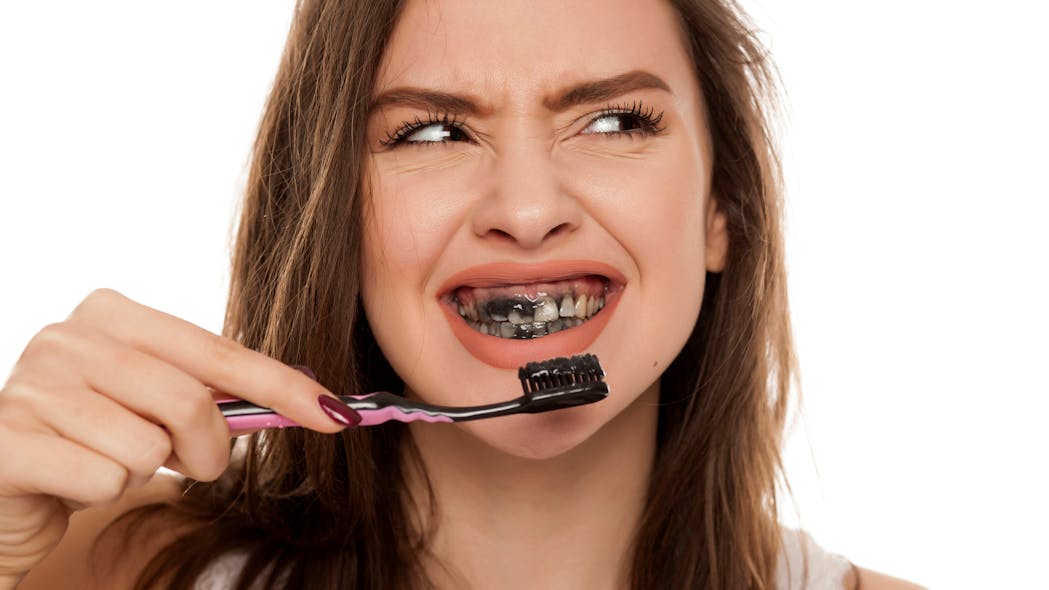Charcoal, turmeric, and coconut oil: Don't try this at home!
Few questions are answered with a near-universal response. However, in the office where I work, 98% of people answer “yes” to one particular prompt on the new-patient form: “Would you like your teeth to be whiter?” The American Dental Association (ADA) says “whiter teeth” is the most common response given when people are asked what they’d most like to improve about their smile.1
Despite the common desire for whiter teeth, there’s widely differing information in articles, magazines, blogs, vlogs, social media, etc., about how this can be accomplished. Also, let’s face it, when it comes to teeth whitening, most people are asking Google before asking their dentist.
How can we educate patients while they’re in the chair so they’ll know how to separate proven science from passing trends?
Common trends
To understand how to communicate with our patients, we need to understand what methods they’ll commonly see peddled through not-so-trustworthy sources. Over the years of speaking with patients both in my office and at trade shows all over the country, I realized that there was a big misconception of how to whiten teeth properly, safely, and effectively. I’ve heard a lot of bizarre techniques, but these three were the most common:
Oil pulling: One client told me she was whitening her teeth via an oil-pulling technique and had added turmeric to that regimen. She would swish coconut oil in her mouth, believing it would whiten her teeth, then rub turmeric on her teeth afterward. As we know, there is no consistent scientific evidence that shows this method helps whiten teeth.2 Patients would be better off using coconut oil and turmeric to make healthy meals instead.
Scrubbing teeth with acidic foods: Another client mentioned that she would use acidic foods such as oranges and lemons to scrub her teeth to help whiten at home. However, as we know, acid does a lot of damage to the enamel.3 Acidic foods should be eaten in moderation, certainly not scrubbed against precious enamel.
Charcoal toothpaste with baking soda: During one trade show, I had an interesting question come up: “I’ve been using charcoal toothpaste and baking soda to help whiten my teeth. Does this work?” I asked the client how he came up with this idea. He said, “I saw thousands of five-star reviews on Google and thought that it would be beneficial to try.” As we know, there is no evidence that shows charcoal is effective, let alone safe for the teeth.4
Patient education
Using abrasive, unproven materials does more harm than good, and we need to urge our patients not to believe everything they read online—especially if it’s not written by a dental professional. But how can we be more proactive in explaining to patients the difference between what’s safe for teeth and what amounts to basically nonsense?
First, we need to note the patient’s response on the patient intake form as to whether they want a whiter smile. If they say yes, like so many do, we have an easy opener to the conversation. Begin by asking directly if they’ve seen any trends online or in magazines. Do they have questions about any “all natural” treatment(s) they’ve read about? Here, it’s crucial to impart that if the content isn’t created by a verified dental professional, it probably isn’t trustworthy. And beyond that, if it seems too good to be true, it probably is.
When it comes to recommending methods that will safely and effectively whiten teeth, we have some great options to offer. But first, we need to ask about patients’ habits in terms of what they eat and drink on a daily basis. Do they enjoy coffee, tea, red wine? Do they eat dark-colored fruits such as blackberries and blueberries? We also need to inquire about tobacco use. Once all these questions are answered, we have a clear understanding of how to help the patient.
From there, we can offer various modalities to achieve whiter teeth, such as: a whitening toothpaste (featuring an ADA Seal of Acceptance), take-home treatments, or in-office treatments.

No comments:
Post a Comment